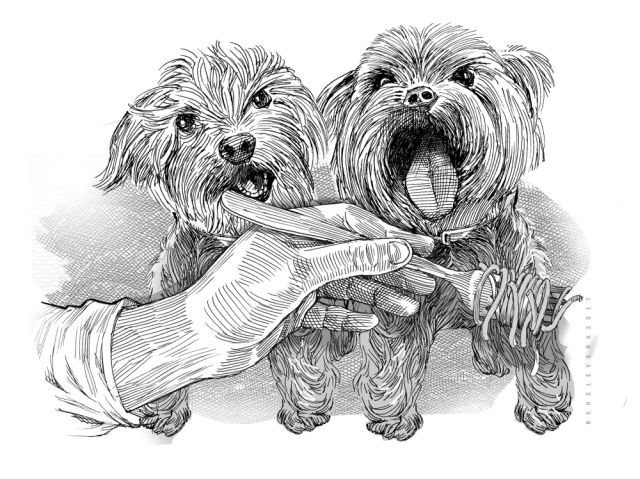I watched her from another table. With a fork, she fed her two dogs, Yorkshire terriers, squatting on two chairs beside her. She would twirl two or three strands of spaghetti around a fork and the dog would undo the knit of pasta with a quick tongue and slurp it in. The other dog waited for its turn with what I would call canine patience. This did not always go with gentleness, however, because when its turn came, and the lady failed to feed it, the dog gave out a sharp bark, as though to call her attention to what I would call canine justice.
I turned to my writing, having come for the purpose to the coffee shop. But the thought of how the lady cared enough for her dogs to train them in fine Italian dining stayed with me. Surely, if they could speak, the Yorkshire terriers would each address the lady, “O sole mio.”
Which the Canaanite woman in the Gospel of Matthew might as well have called Jesus for freeing her daughter from the oppression of the devil. Which amounts to “Son of David,” how she in fact addressed Jesus, which adds up to the title, Messiah.
Matthew writes that, having moved from place to place, Jesus finally withdrew to the region of Tyre and Sidon, and there a Canaanite woman came and called out, “Have pity on me, Lord, Son of David! My daughter is tormented by a demon.”
But Jesus did not reply. His disciples, bothered by her persistence, advised him, “Send her away, for she keeps calling out after us.” To which Jesus responded, “I was sent only to the lost sheep of the house of Israel.”
With great reverence, the woman said to Jesus, “Lord, help me.” He said in reply, “It is not right to take the food of the children and throw it to the dogs.” The woman did not take offense, however; she instead said, “Please, Lord, for even the dogs eat the scraps that fall from the table of their masters.” Her great humility moved Jesus to explain, “O woman, great is your faith! Let it be done for you as you wish.”
The 17th-century French Rococo artist Jean François de Troy rendered this scene on canvas. Done in a dramatic and monumental manner, the work depicts a compassionate Christ as he blesses the Canaanite woman, who kneels as she points to a puppy in front of her. The disciples, grouped in front of Jesus, talk about the woman, and since she devotes her attention to the puppy, this lays claim to no little importance. But, of course, Matthew, no less than Mark, merely mentions the dog by way of metaphor, and by no means suggests the presence of an actual dog at the scene.
When Jesus alluded to taking the food of the children and throwing it to the dogs, he might have wanted to emphasize the priority of the Jews in his mission, perhaps laying the basis — because of the Jews’ rejection of him — for the shift of his work to the Gentiles, whom the Canaanite woman represented and the evangelists credited with a humble openness to faith.
Jean Francois de Troy’s painting, despite its ornate and extravagant style, conveys this impression. The scene has such gentleness that, rather than pointing to the puppy as a little scavenger — eating the scraps that fall from its master’s table — the woman seems about to lift it up and cradle it in her arms, thence to seat it on a chair and feed it with food straight from the master’s table.
Or else, because the puppy represents the rest of us, those who accept rather than reject the Lord, to entrust it to Jesus, for him to carry as a shepherd would a lamb.
Disclaimer: The comments uploaded on this site do not necessarily represent or reflect the views of management and owner of Cebudailynews. We reserve the right to exclude comments that we deem to be inconsistent with our editorial standards.

